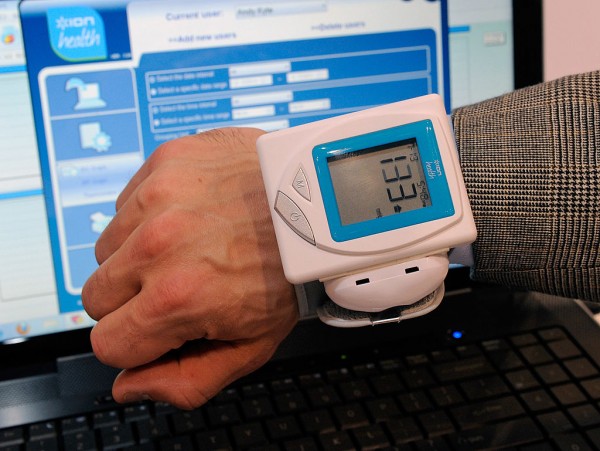At-Home Blood Pressure Monitor: 5 Things to Consider When Choosing a Reliable One

While doctors highly recommend arm-based blood pressure monitoring machines as they are more accurate, wrist-based devices may be preferred in certain conditions like when one has a disability that hinders him from 'affixing an arm-based blood pressure monitor.'
In 2017, the Centers for Disease Control and Prevention released some crucial facts about hypertension, which could put one at risk for stroke and heart disease and, eventually, cause death among many people in the United States.
CDC also reported that almost 500,000 deaths in the US included hypertension as either the leading or contributing cause.
The health agency found, about one in every four adults or 24 percent, has hypertension and has had the condition under control.
Relatively, almost 50 percent of adults with uncontrolled hypertension reportedly have "blood pressure of 140/90 mm HG," or even higher. The said percentage includes more than 35 million adults in the US.
ALSO READ: FDA Approves Becton Dickinson's 15-Minute Handheld Rapid COVID-19 Test
Owning an At-Home Blood Pressure Monitor and Factors to Consider
Since hundreds of thousands of deaths have been reported in which hypertension could have been either the main reason or contributor, every household must have an at-home blood pressure monitoring device.
For families with members who have that condition, this device is undeniably essential. If you are looking for a machine to regularly monitor your own or a loved one's blood pressure at home, here are some factors to consider to guarantee reliability:
1. Pick an Arm-Based machine
When it comes to at-home blood pressure monitoring kit, the American Heart Association highly recommends that "the use of an upper-arm cuff oscillometric device," which has successfully passed the authentication procedures.
CNET reported oscillometric devices are ideal as they can automatically detect and examine pulse waves of a person, so he does not need to depend on someone else anymore to listen using a stethoscope.
Dr. Erica Spatz, Yale Medicine cardiologist, warned, "wrist- and finger-based blood pressure monitors" are usually inaccurate. However, there are situations, Spatz explained, in which these monitoring devices might be preferred, like when one has a disability that hinders him from "affixing an arm-based blood pressure monitor."
2. Have Your Arm or Wrist Measured
A significant contributor to achieving accurate reading for blood pressure is the use of a monitoring device that perfectly and correctly fits. If your monitor is either too small or too big, chances are, you'll get an inaccurate result.
Therefore, the at-home blood pressure monitoring device should be able to compress the main artery in your arm.
If you are not so sure about the size cuff needed, Dr. Jennifer Haythe, Columbia Women's Heart Center's co-director, advised that you just ask your doctor about it.
Guidelines are existing, Haythe added, for the size of a cuff an individual would need according to his arm's length and circumference.
DON'T MISS THIS: Band-Aid Introduces Skin Tone-Shaded Bandages in Support for Black Communities
3. Create Your Checklist for the Blood Pressure Monitoring Device You're Buying
Aside from accurate reading, think of other things you need from an at-home blood pressure monitoring device you ought to have.
For instance, a built-in detector for irregular heartbeat can be helpful for those with a fast heartbeat, slow heartbeat, or other "atrial fibrillation" types.
Other considerations you might want to take before you settle on a device include possible sharing of the device with others at home; Bluetooth connectivity if there is a need to transfer the readings to your phone; and communication feature like email so you can send the reading directly to your doctor, among others.
4. Ensure the Device has Undergone and Passed Clinical Testing which AHA Requires
Once you're okay with the measurements on hand and guaranteed and found the features you are looking for in an at-home blood pressure monitoring device, the next important thing to check is its "clinical validation."
When you've reached your supplier or the store you're getting the device from, check if the machine has gone through clinical testing and passed the AHA's requirements.
5, The Most Important of All, Check the Price if It is Within Your Budget
Typically, an at-home blood pressure monitoring device can cost as affordable as $30 up to a little over $100.
When buying a health monitoring machine like this one for blood pressure, it is important to understand the best balance between opting for an ideal product to support your condition and staying within what your wallet can afford.
IN CASE YOU MISSED THIS: Staring Into Deep Red Light Can Retain Vision, Study Finds
Jul 11, 2020 07:00 AM EDT





